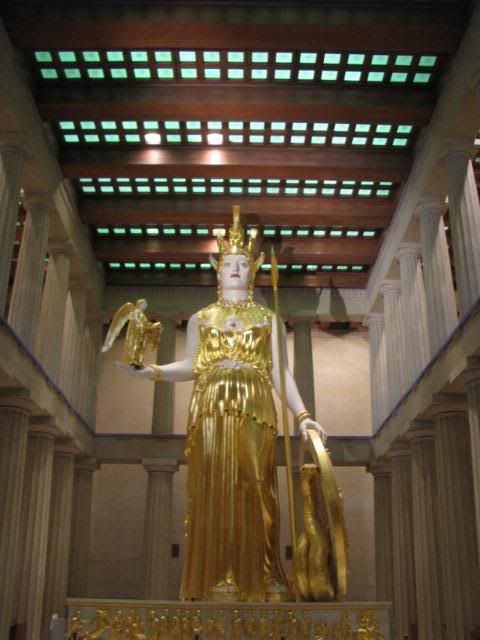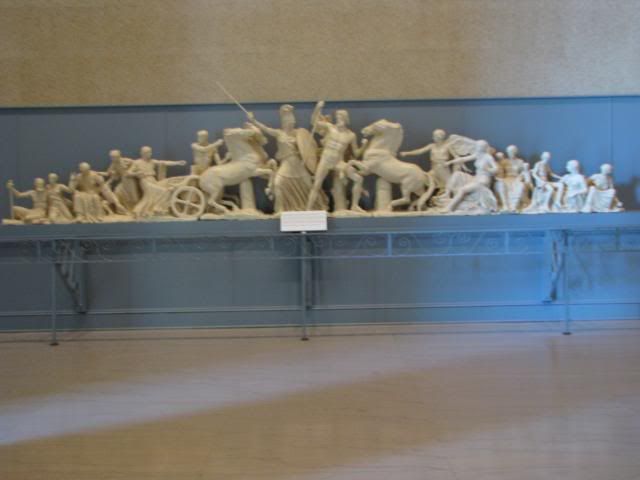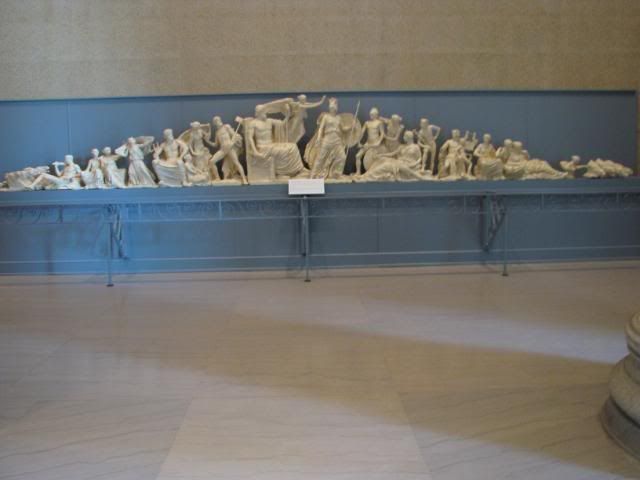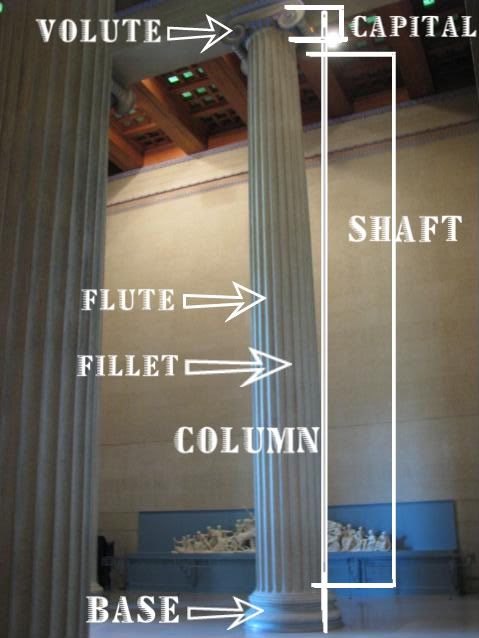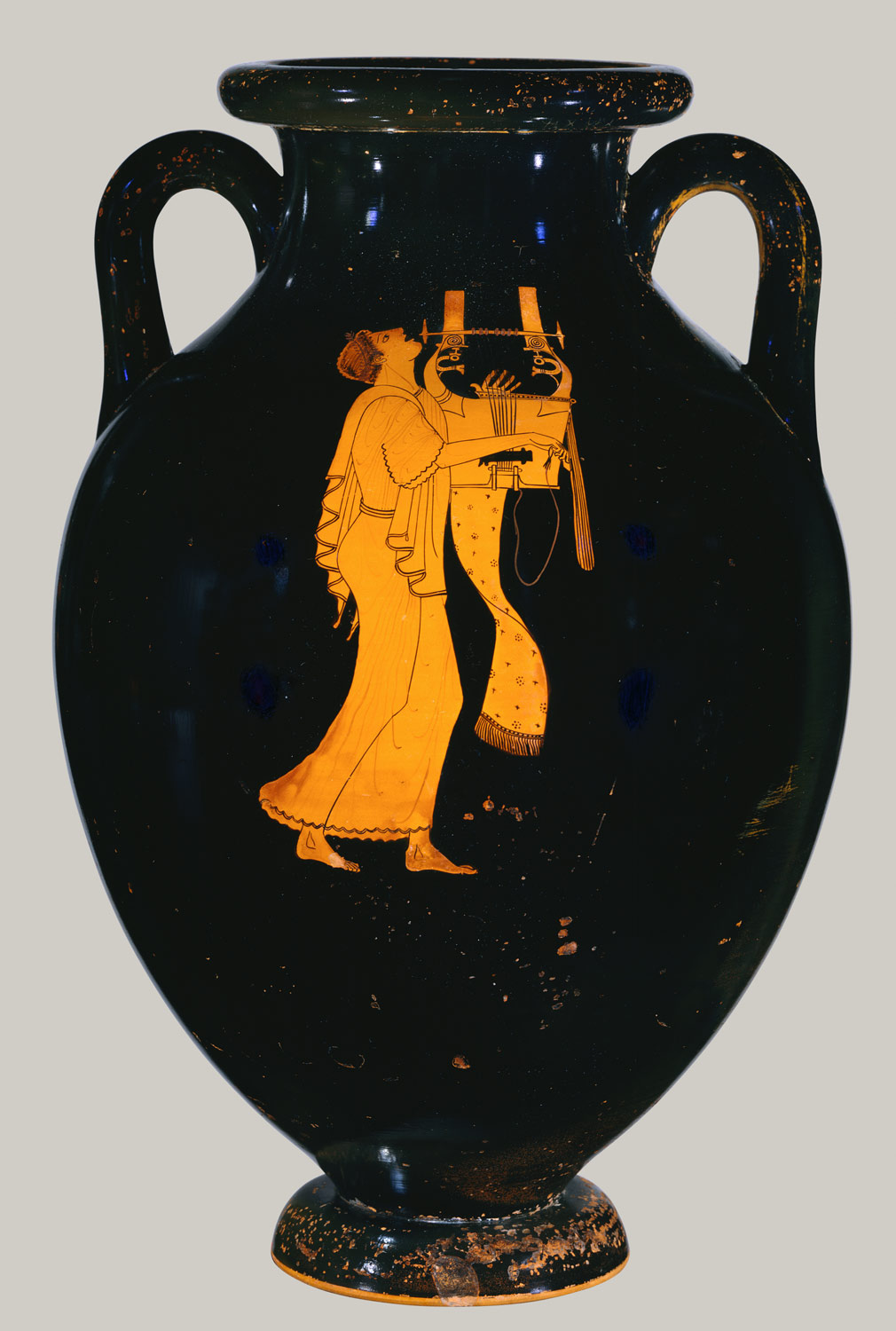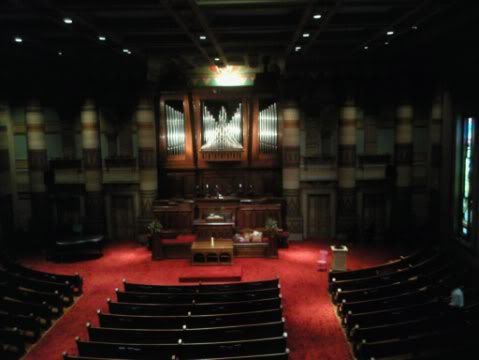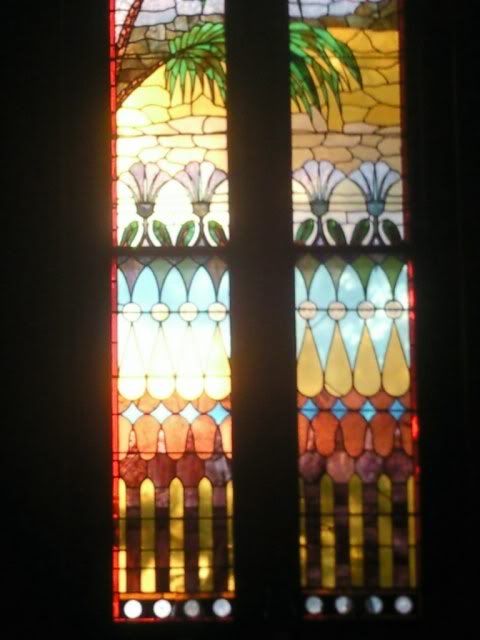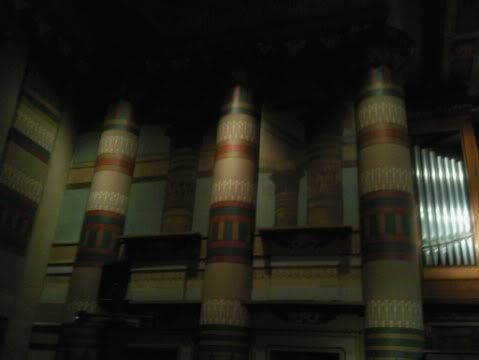The Church of Santa Sabina, constructed between 422 and 432, is a perfect example of a typical Early Christian basilica. It has a simple brick exterior, contrasted by the elaborate marble interior. The church is lit by clerestory windows which bathe the interior in a heavenly light and evoke feelings of respect and awe. There are 24 columns inside, topped by Corinthian capitals that are spolia from earlier pagan buildings, and they support rounded arches. The nave of the building is flanked by single side aisles created by the columns and ends in a rounded apse. The inside of the church is decorated elaborately and features depictions of Christ as a shepherd, as well as laurel branches that symbolize God as a provider.
Early Christian art and architecture greatly resembled that of the Roman Empire. This is partly due to an ongoing sense of membership to the Roman Empire during this period of time, and the similarities between the Basilica Ulpia and the Church of Santa Sabina are examples of this. Both buildings were places of community gathering; the Basilica Ulpia served as a courthouse, while Santa Sabina provided a large place of worship for the growing Christian community. Both buildings have a similar structure and employ the use of clerestory windows to create an emotional effect with light. Christians modified and adapted the Roman style to fit their needs, and the Basilica Ulpia provided a model for many future churches. Roman art and portraiture was based on an idea of realism (and an oftentimes false sense of individualism), while Early Christian art was dominated by symbolism, for the meaning of the depiction was often more important than the physical appearance itself. Rather than being a mere visual representation of a subject, Christian art served as a way of telling the largely illiterate public about Jesus' life and teachings. Thus, this period of time involved a shift from an emphasis of mankind and human activities to a focus on the divine. This is shown in the architecture as well, for there was an increase in the construction of churches and baptisteries.



